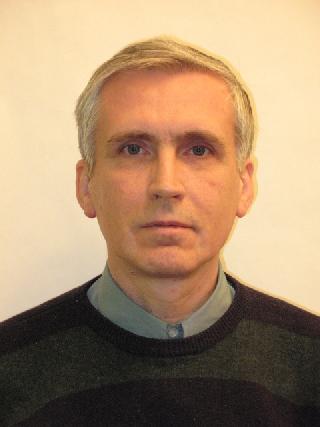Grigorii (Petrovich) Mikitik, Leading Researcher, DSc.

Department of Theoretical Physics,
B. Verkin Institute for Low Temperature Physics
& Engineering
of the National Academy of Sciences of Ukraine.
47 Nauky Ave., Kharkiv, 61103, Ukraine
Languages:
English, Russian, Ukrainian
Education:
Name of Institution |
Degrees |
Field |
|---|---|---|
| B.Verkin Institute for Low Temperature Physics and Engineering of the National Academy of Sciences of Ukraine | Doctor of Sciences (2008) | Theoretical physics |
| B.Verkin Institute for Low Temperature Physics and Engineering of the National Academy of Sciences of Ukraine | Senior Researcher (2000) | Solid State Physics |
|---|
| Institute for Low Temperature Physics and Engineering (Kharkiv) | PhD (1982) | Solid State Physics |
|---|
| Institute for Low Temperature Physics and Engineering (Kharkiv) | Post-graduate (1978-1981) | Solid State Physics |
|---|
| Novosibirsk State University | M.Sc. (1973) | Physics |
|---|
Field of Scientific Interest:
Condense matter physics. In particular, properties of topological materials and physics of vortices in type-II superconductors.
Main Achievements:
-
Theory of the electron phenomena in condensed matter physics.
The following results were obtained in this field:
(i) The Berry phase, equal to π, can occur even in crystals with negligible spin-orbit interaction if an electron orbit surrounds a band-contact line in the Brillouin zone of such a crystal ]26].
(ii) A nonzero Berry phase changes the semiclassical quantization condition for electron orbits in topological semimetals and insulators, this change has the universal form even if the Berry phase differs from π and manifests itself in the phase of the quantum oscillations [23,26,40,45,57,58,65,74, 76,78,93, 112,115,118].
(iii) Magnetization [11,18,75,102,105-107,110,113] and magnetostriction [103,114] of electrons in nodal-line, Dirac and Weyl topological semimetals can exhibit anomalies. These anomalies occur at electron topological transitions [98,100,101,108] that differ from the well-known Lifshitz transitions of the 2½ kind. -
Vortex physics. The main results in this field are the following:
(i) The H-T phase diagrams of type-II superconductors were analyzed, taking into account thermal fluctuations of the order parameter and flux-line pinning [13,17,36,38,46,53].
(ii) The complete set of the critical state equations for thin flat anisotropic superconductors was derived [31,59,71].
(iii) Exact solutions of the equations describing the critical [32,67,84] and Meissner [33] states were obtained for superconductors of realistic shapes.
(iv) The vortex-shaking effect was explained [37,41,49,72].
(v) Effects of a sample shape and of anisotropy of the flux-line pinning on magnetic relaxation in type-II superconductors were studied [20,24,30,39,47,56].
(vi) Penetration of vortices into type-II superconductors with rectangular cross sections [95,117] and the critical current of such superconductors [111] were analyzed, taking into account an interplay between the Bean-Livingston and geometrical barriers.
Professional Experience:
Since 1981 has been working at ILTPE.
During 1998-2010 - invited scientist at Max Planck Institute (Stuttgart, Germany)
Publications:
Number of papers: 119 (in the refereed journals - 119)
The full list of the publications is here:
Selected Publications for the last 10 years:
- Grigorii P. Mikitik, Quasi-Dirac points in electron-energy spectra of crystals, Communications Physics 7, 295, 1-9 (2024).
- T. Cichorek, L. Bochenek, J. Juraszek, Yu. V. Sharlai, G. P. Mikitik, Detection of relativistic fermions in Weyl semimetal TaAs by magnetostriction measurements, Nature Communications 13, 3868, 1-9 (2022).
- G. P.Mikitik, Critical current in thin flat superconductors with Bean-Livingston and geometrical barriers, Phys. Rev. B 104, 094526, 1-18 (2021).
- G.P. Mikitik, Yu.V.Sharlai, Magnetic susceptibility of topological semimetals (Review article), J. Low Temp. Phys. 197, N3/4 272-309 (2019).
- L. Embon, Y. Anahory, Z.L. Jelic, E.O. Lachman, Y. Myasoedov, M.E. Huber, G.P. Mikitik, A.V. Silhanek, M.V. Milosevic, A. Gurevich, & E. Zeldov, Imaging of super-fast dynamics and flow instabilities of superconducting vortices, Nature Communications 8, 85 (2017).


